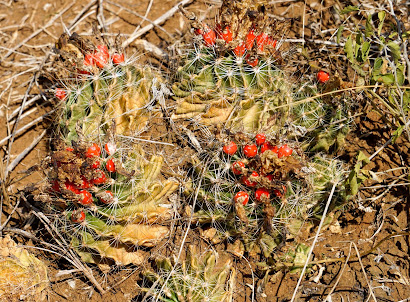When we were first planning the prairied restoration, we were cautioned to have patience. Grasses don't grow like vegetables in a garden. It takes time. One wildlife biologist explained that the first year after they germinate, they use their energy to put down deep roots. "They go deep," she said. The second year the plant grows larger and puts on leaves. "They creep," she explained. About the third year the "tall grasses" earn their name. "They leap," she told us.
We planted our grasses from seed twenty-one months ago. Thousands germinated and we could see those little tufts of grass on top of the ground that were working hard to extend their roots deep into the sandy loam of our field. Many will grow twice as far underground as they appear above the ground. We witnessed a lot of creeping going on this year. The plants were more extensive and more noticeable.
Most of the grasses still have a way to go, but a good number of them have started leaping. We have Alamo Switchgrass that is taller than I am growing near the house, and the seed heads are more massive than my head. Little Bluestem, Big Bluestem, and Yellow Indiangrass are flourishing, blooming, and forming beautiful seed heads as well. Eastern gamagrass, Sideoats grama, Purple Lovegrass, and Green Spangletop are leaping as well in many places. This is the time of year when these warm-weather grasses do best. A walk in the prairie this morning produced some evidence of all the leaping taking place.
 |
| Maximillian Sunflowers and Green Spangletop |
 |
| Big Bluestem |
 |
| Big Bluestem |
 |
"Turkey Foot" bloom of Big Bluestem
|
 |
| Big Bluestem |
 |
| Big Bluestem |
 |
| Yellow Indiangrass |
 |
| Yellow Indiangrass |
 |
| Yellow Indiangrass |
 |
| Yellow Indiangrass |
 |
| Sideoats Grama |
 |
| Sideoats Grama |
 |
| Alamo Switchgrass |
 |
| Alamo Switchgrass |
 |
| Alamo Switchgrass |
 |
| Little Bluestem |











































